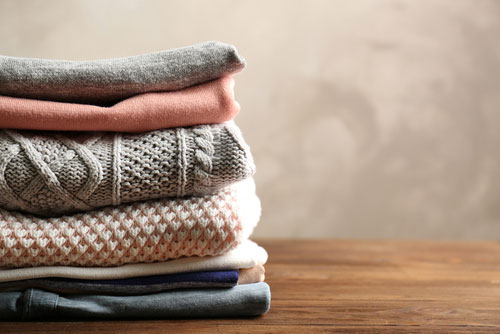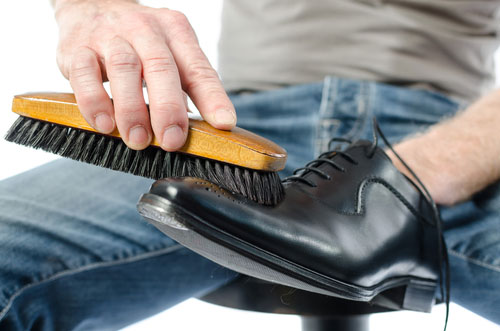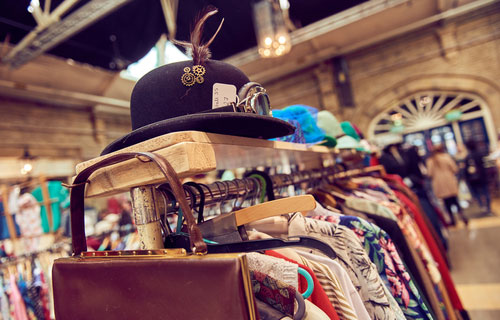How can you dress more ecologically? What kind of clothes should you dress and buy to protect the environment? How can you shop more ethically and support a more responsible fashion? We’re sharing 3 simple tips you can follow.
It’s not unusual to hear the fashion and textile industry is the second most polluting industry in the world. Although this is not true, it is still a very polluting industry with a big environmental impact.
Making clothes means growing cotton (in harmful and non-regenerative ways), weaving wool or making synthetic textiles (such as nylon, made from plastic fibers, that end up in the oceans after being washed). Moreover, clothes also take dyes and other chemically polluting treatments and are most times transported from one end of the planet – transportation costs which are very polluting. At the same time, on the social level, this is an industry where most times employees work under miserable conditions in undeveloped or developing countries where manpower is cheap and social rights aren’t protected.
For all these reasons, it’s important to adopt fashion behaviors more in tune with an eco-friendly clothing industry. Here are 3 simple and effective tips to improve the environmental impact of your clothes. All in the name of a greener, more ethical and responsible fashion.
1 – Buy High-Quality Clothes That Last

It is often said that to consume green clothing you have to turn to specific brands using fabrics from recycled materials or innovative bamboo fibers. Other times you may have heard you should avoid certain types of cotton or wool and prefer fibers such as lyocell or linen… However, if you want to consume more ecologically there’s something better you can do.
Lifecycle analyses conducted on clothing show that the main determinant of the environmental impact of our clothes is… their lifespan. Of course, some types of fabrics or treatments are more environmentally friendly than others. For example, organic wool or cotton is generally much more environmentally friendly than synthetic materials which require fossil fuels for large amounts of energy for their transformation. But between two clothes, one supposed to be green and the other more classic, what will most influence its environmental impact will the time you keep this garment in good condition and able to be used. An organic linen t-shirt can be less green than a conventional cotton t-shirt if you keep the second 5 years without damaging it while the first will only last you for 2-3 years.
In this way, the most important factor to reduce the environmental impact of fashion is quality. If you buy quality products, made of durable materials and correct finishes, you’ll keeper them for a longer period. And this greatly reduces the impact of your “fashion” purchases. So if you’re shopping and you want to be green buy less, but bet on quality products that will necessarily cost more. A merino wool sweater with a quality knit is better than a sweater in wool and synthetics, poorly woven, that will not hold. Good leather shoes, with a Goodyear sewn or stitched Norwegian sole, will be more resistant and you’ll keep them for 8 or 10 years.
And a reinforcement: brands that offer good quality products usually also provide their workers with good working conditions.
- Related:
2 – Take Good Care Of Your Clothes So That They Last Longer

For the same reasons discussed above, you must also learn to use and maintain your clothes properly. This is especially important for two reasons.
First, of course, because it increases the lifespan of your clothes. If you weave your knits in the washing machine to 60 degrees with drying, you may not keep them for a long time. You have to read the labels on your clothes to plan your washes correctly. Because while some clothes might need to be hand-washed or taken to the laundry, others can be washed cold and others at a warmer temperature. But maintenance is also about the way you wear your clothes. For example, shoes should not be worn every day. Leather shoes, in particular, last much longer if you let the material breathe for a day. Moreover, learning how to maintain the material clean and wax the leather are also best practices for clothes to last longer.
Second reason: most environmental impacts happen when we’re using a garment. Life cycle analyzes showed the largest share of environmental impacts (CO2 emissions, energy consumption, eutrophication, etc.) occurs during the use phase, particularly because of washing. Every time we wash a garment, energy is used to power the washing machine and to heat the water. In addition, if we use the drying option on top of that, extra energy will be used.
To reduce clothes’ environmental impact, you must wash them less. This means having extra care and avoid them from getting dirty, but again, it means good maintenance as well! Most jeans don’t need to be washed after being used a few times, especially if they are hanged and ventilated regularly between uses. Ditto for sweaters, coats, cloaks and other “heavy” clothes. Moreover, maintenance is also knowing how to repair a garment rather than throwing it away. A lot of small damages can be repaired on a garment. For instance, a stitch pulled, a fixed hole or even readjusting clothes that are the upper size. Rather than throwing a garment that no longer suits you or has been damaged, make sure if you can’t fix it first!
At the same time, you can also choose more ecological washing products that are less polluting.
- Related:
3 – Use Second-Hand Clothes: Reuse, Resell, Exchange

Finally, a good way to improve the environmental impact of your clothes is to use second-hand circuits. If you’re tired of your clothes, try to sell them away for a second life, rather than throwing them away or keeping them in your closets. And the good news is that you can also buy second-hand clothes. Depending on where you can get, you’ll definitely be able to find clothes in good conditions and at much lower prices.
Hence, avoid buying new clothes and encourage a more virtuous consumption model where you consume less but better. Of course, these 3 tips are not necessarily easy to implement, especially when you have limited financial means. But it is also a positive investment in the long term, financially speaking. Because it’s better to buy a quality pair of shoes that last for years than average sneakers that will last you a year. Choosing quality first can be a hard habit to acquire. Yet, it pays off over time and allows you to dress well while respecting the planet.
Ultimately, all these tips can influence the market and help a transition from fast-fashion to “slow-fashion”. This latter is a fashion movement where people buy quality basic(s) clothes that last a “lifetime” instead of purchasing low-quality products that need to be renewed every year. Because fast fashion is what’s putting the environment at stake.
- Related:
Image credits to vintage clothes on Shutterstock, laundry on Shutterstock, shoe polish on Shutterstock and warm clothes on Shutterstock

